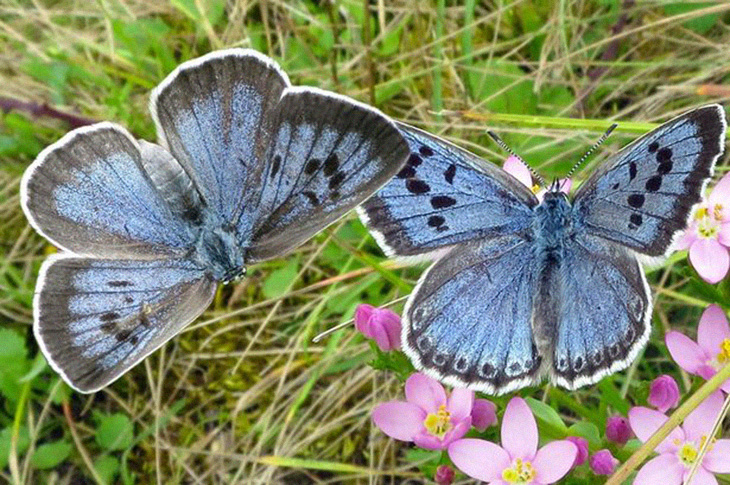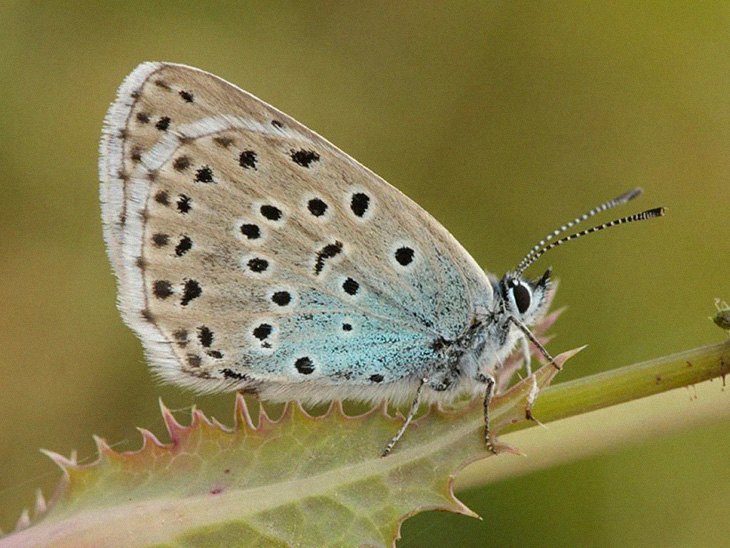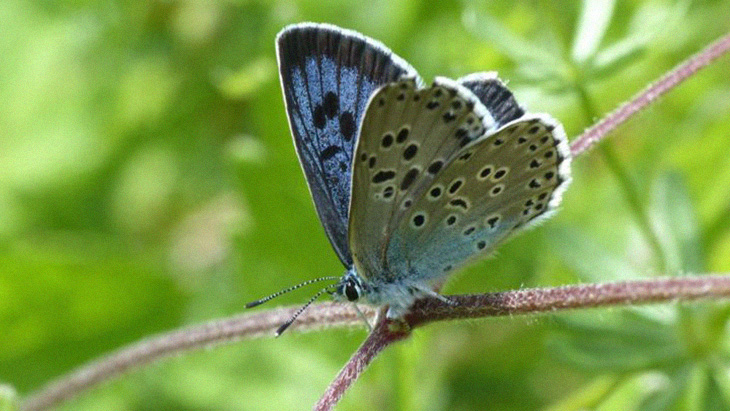
A large blue butterfly that was once extinct is finally being reintroduced to the wild after it disappeared from the face of this planet for 150 years. The UK has successfully brought back the large pollinator to life, as it has repopulated large parts of the country. Thanks to the dedication and hard work of the scientists behind the project, the dream of bringing this wonderful species back has been fruitful. So, how did they do it? It definitely wasn’t an easy task. Persistence definitely played a key role for this.
In fact, 750 large blue butterflies, a species marked by distinct rows of black spots on its forewings, have been spotted by several people just this year around Rodborough Common in Gloucestershire, Southwest England. And experts believe that this number is the highest compared to the other areas in the world.
Back in 1979, this butterfly was declared to be extinct because no one had seen any of its kind for 150 years. This specific breed comes in different colors, but the rarest one of all is Britain’s Blue Butterfly species, according to BBC. However, just last year, conversationists released around 1.100 larvae around the region. This was only done after they fastidiously prepared the landscape in order to make the butterfly’s return a success.
While thousands of butterflies still exist, this large blue one has a unique life cycle. It starts off as a tiny caterpillar that tricks the area’s red ant population (myrmica sabuleti) into hauling them in their nest. In order to do this, the caterpillars woo the ants through ‘singing.’ Once dragged into the ant’s haven, the parasitic larvae feast on grubs. This takes a year, after which, they emerge as the blue butterfly.

Research Ecologist David Simcox explains, “In the summer when the ants are out foraging, nature performs a very neat trick – the ants are deceived into thinking that the parasitic larva of the large blue is one of their own and carry it to their nest. It’s at this point that the caterpillar turns from herbivore to carnivore, feeding on ant grubs throughout autumn and spring until it is ready to pupate and emerge the following summer.”
It was crucial that the conservationists were able to control the red ant population. The success of the endeavor largely depended on this. The fruits of their effort definitely didn’t happen overnight. It took a range of experts from the National Trust, Butterfly Conservation, the Limestone’s Living Legacies from the Brink Project, Natural England, Royal Entomological Society, and the Minchinhampton and Rodborough Committees of Commoners five years to collaborate and prepare the entire environment for the butterfly’s effective return.
Moreover, cattle grazing was constantly kept in check and the area’s scrub cover was commissioned to help with the ant population. The people behind the project also encouraged the growth of wild thyme and marjoram to warrant that upon the butterfly’s return, these beautiful winged insects would have their own natural source of food and habitats where they can lay eggs in.

Ranger Richard Evans states, “Butterflies are such sensitive creatures, and with the large blue’s particular requirements they are real barometers for what is happening with our environment and the changing climate. Creating the right conditions for this globally endangered butterfly to not only survive but to hopefully thrive has been the culmination of many year’s work.”
Originally, the caterpillars were brought to the country from Sweden by an ecologist’s camper van. After years of collaboration, the large blue butterfly has effectively established its stronghold sites around the UK. In fact, they have gone as far as colonizing large areas across Southern England.
While there are several reintroduction projects ongoing, the return of the large blue to the region has been the most successful one to date. This marked the successful culmination of 40 years of effort. Evans explains, “One of the greatest legacies of the re-introduction is the power of working together to reverse the decline of threatened species and the benefit the habitat improvements will have for the other plants, insects, birds, and bats of the commons.”
The world can only wait with bated breath and unending hope for the other reintroduction missions to be equally successful.
What are your thoughts? Please comment below and share this news!
True Activist / Report a typo


